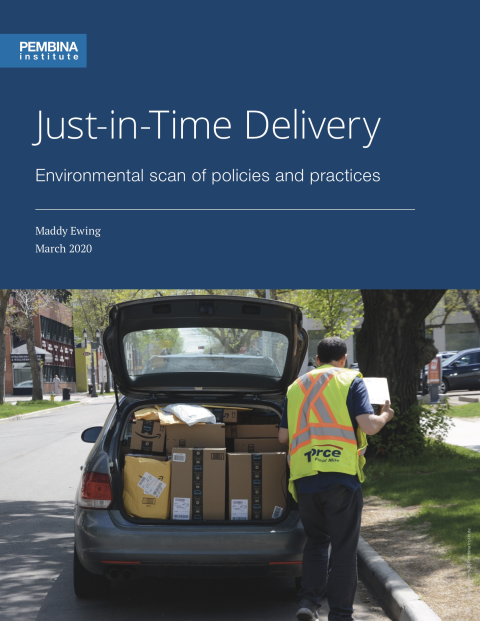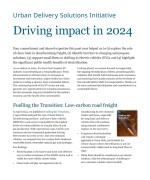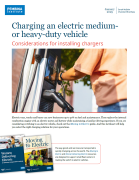Goods distribution is a backbone of the Canadian economy; however, it is also a growing source of emissions. As urbanization, online shopping and the demand for just-in-time deliveries increases, it is expected that more freight vehicles will be on our roads.
There are three major trends that are changing the landscape of goods distribution in Canada:
-
The increasing popularity of just-in-time (i.e. when goods aren’t ordered or received until absolutely necessary) delivery
-
Higher volumes of online sales
-
A demand for free shipping
Amidst the fierce competition among businesses to provide the fastest and lowest cost delivery, there are emerging efforts to reduce the carbon footprint of goods distribution that is increasing alongside faster delivery expectations and a higher volume of online sales. To promote this reduction, private and public actors have begun to implement policies and initiatives to encourage delivery methods with lower GHG emissions, whether that be a low impact mode of transport or a longer delivery period. Across North America and Europe, there is a spectrum of existing and proposed corporate initiatives and public policies aimed at encouraging low-carbon delivery methods. As outlined in this report, these policies and initiatives include tax policies, consumer incentives, and nudge policies.
The report finds that multiple actors have a role to play in communicating the externalities of free and fast shipping. To reduce the carbon intensity of goods distribution by increasing consumer awareness of the impacts of their delivery choices, we recommend the following actions:
- Limit free, fast shipping
- Make low-carbon shipping the default option and make it a highly desirable option
- Educate consumers on the environmental impact of their chosen delivery method at check-out
- Reduce spontaneity and demand for single item baskets by encouraging predictable, consolidated delivery






